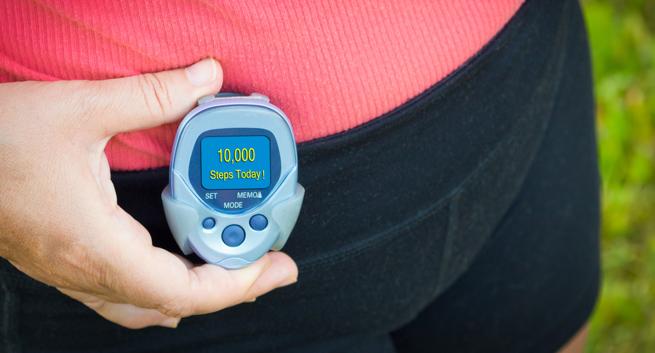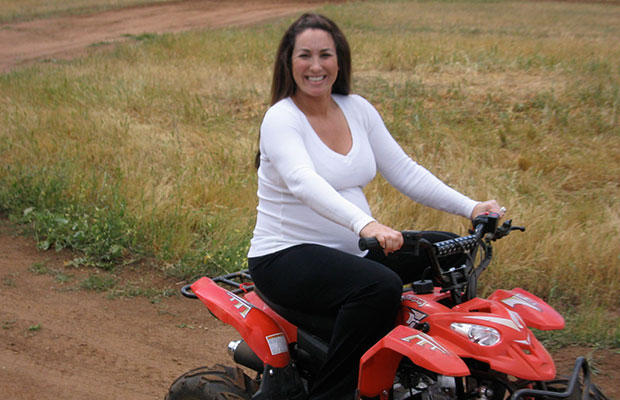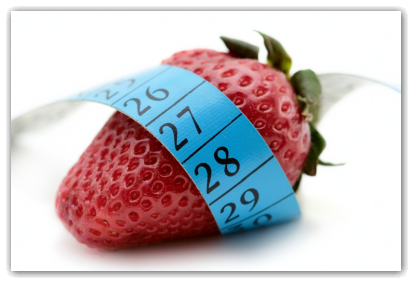How to Bike for Weight Loss
Biking can be a great way to lose weight. Unlike some other fitness programs, the learning curve is minimal. Chances are you already know how to ride a bike. Plus, biking is a fun, easy, low-impact exercise that’s easy on your joints, accessible to just about anyone regardless of age or fitness level. By starting slowly and sticking to a regular biking routine, you can lose weight and improve your cardiovascular health.
Steps
Part 1 Choosing Your Gear
-
1
Choose your bike. Do you want to bike outdoors or use a stationary bike? The advantage of stationary bikes is that you can do other things while you ride, like watch your favorite TV show.[1] Regular bikes, however, get you outdoors and can have a positive impact on the environment if they replace transport by car.[2] Of course, you can always do both.
- If you choose a regular bike, be aware that there are many different bike styles, from mountain bikes to road bikes to beach cruisers to fixed gear bikes. Bikes can vary widely in price. The type of bike you choose will depend on your body type and on where you plan on riding. Talk to your local dealer, and consider arranging a bike fitting.[3][4]
- If you choose a stationary bike, you’ll either need to buy one or join a gym. You’ll also need to decide between a recumbent or an upright bike. Choose the former if you have back problems; choose the latter if you don’t. Upright bikes also help strengthen your core.
-
2
Pick the right clothes. According to Cornell University weight-loss researcher Brian Wansink, wearing fitted clothes made of lycra instead of baggier outfits makes it easier to keep track of your weight loss. Wansink found that prisoners tend to gain weight because of the baggy jumpsuits they’re forced to wear.[5]
- Loose-fitting clothes will also create drag and slow you down.
- Choose clothes that make more visible to motorists.[6]
- Over-dressing to sweat more (a common practice in France) won’t actually help you lose weight.[7]
-
3
Get the right accessories. A helmet is a must-have if you plan on taking your bike on the road. Make sure you buy one that fits you properly.[8] You’ll also want to bring along a patch kit to repair busted tires and a small hand pump to inflate them.[9] If you plan on storing your bike outside, get a bike lock.[10]
- It’s also a good idea to carry a saddlebag to store your ID, your keys, and your phone, which might fall out of your pockets as you ride.[11]
- Carrying a water bottle means that you can stay hydrated while you ride.[12]
- Consider carrying carbon dioxide cylinders in your pack to quickly re-inflate flat tires.
Part 2 Planning Your Routine
-
1
Start slowly. Start out nice and easy in a safe location like your neighborhood before tackling more difficult terrain like hills. Once you get more comfortable, you can begin biking in more high-traffic areas.[13]
- Stick to flat areas at the beginning. Try a local park or bike trail, or find a route using a website like traillink.com.
- When you first start biking, you may not be able to travel more than a few miles. Stay close to home so that you don’t get stranded. You should be able to bike a few miles within a month or so.[14]
-
2
Alternate the intensity of your ride. Sprinting with high resistance will burn more calories. Riding at a more leisurely pace with low resistance will help build endurance. But a combination of the two is actually your best bet. A study published in the Journal of Applied Physiology found that alternating between sprinting and endurance burns more calories.[15]
- Ride on hills! Champion cyclist Rebecca Rusch uses standing hill drills (that is, alternating between standing and sitting while pedaling up a hill) to build her endurance.
- Ride harder at the very end.[16]
- Try spin classes at your local gym. Or consider hiring a trainer.[17]
-
3
Make recovery time part of your routine. Plan on riding hard one day and then doing a more leisurely “recovery ride” or some cross-training the next. You should plan entire days off too.[18][19]
- Make sure you’re getting enough sleep and giving yourself breaks between cycling sessions. According to Stacy T. Sims, exercise physiologist at Stanford and founder of Osmo Nutrition, sleep deprivation can lead to false hunger and unnecessary cravings.[20]
- Consider getting a massage on your day off.[21]
-
4
Set specific goals. Determine your target weight and estimate how long it will take you to reach this goal. Biking for weight loss is a long-term strategy. Don’t be discouraged if you don’t see immediate results.
- Losing 1 to 2 pounds a week is a sensible, achievable goal.[22]
- Use an online BMI calculator to help determine your ideal weight.
Part 3 Rethinking Your Diet
-
1
Eat breakfast. While there is some disagreement about whether you should eat breakfast before[23] or after biking[24], eating breakfast nevertheless plays an important role in weightloss.
- Many people associate breakfast with cereal and bacon. However, if you want to lose weight, all of your meals should consist of lots of fruits and vegetables. Fresh fruits and veggies are best, but frozen versions are often excellent. Use caution when buying canned fruits and veggies, which can contain added sodium and sugar.[25]
- For protein, choose lean meats, fish, beans, eggs, and nuts.[26]
-
2
Eat while biking. This might seem odd, but eating while on a longer ride can actually help keep you going on longer rides and can help you avoid overeating after rides.[27]
- Bars, bananas, and gels are good choices for eating while riding.[28]
- Plan on eating 200-250 calories per hour.[29]
-
3
Eat right after biking. The 30 to 60 minutes after your biking session constitute your body’s “recovery time.” Your body needs nutrients to help repair itself.[30]
- Carbohydrates alone help restore glycogen levels. But eating a combination of carbohydrates and protein together means you don’t have to eat as many carbs, which can be difficult after a grueling workout.[31]
- Eating protein also helps to rebuild the muscles that have broken down during your ride.[32]
- Prep your recovery food before you ride in case you’re too tired to put something together when you finish.[33]
-
4
Stay hydrated. Make sure you drink plenty of water before, during, and after biking. Soon after finishing your biking session, refill your water bottle and drink the entire thing.[34]
- Beware energy drinks, which contain caffeine and other stimulants and can lead to dehydration.[35]
Part 4 Staying Motivated
-
1
Keep your bike visible and accessible. Storing your bike out of sight allows for other priorities to get in the way of your biking routine. According to Stanford health psychologist and fitness instructor Kelly McGonigal, having a reminder to exercise will keep you motivated to do so.[36]
- Store your bike in a place where you will be able to use it.[37]
- 2 Vary your routes. An occasional change of scenery will break up the monotony of riding the same route over and over again, and it will present new physical challenges.[38]
-
3
Commute by bicycle. You can bike to work or do errands around town on a bike. The average bicycle commuter loses weight without putting forth any extra effort.[39] You’ll also save money on gas and have an easy time finding parking.
- If you’re planning to ride your bike to work, bring a change of clothes and consider showering at the office, if that’s possible. Whatever you do, avoid being too sweaty at work.
- Plan your route to work carefully to make sure you’re not late for work. Make the trip on a day you’re not working so that you can get comfortable with the routine.
- 4 Make friends with other bikers. Having friends you can ride with, whether in a spinning class at the gym or on the open road, means that you can exercise and socialize at the same time.[40]
-
11 Lazy Ways To Burn More Calories
You might think losing weight is all about hard work at the gym and ha
-
How Body Contouring Treatments Assist Major Weight Loss
When people have achieved major weight loss, whether it is due to diet
-
All Healthy Weight Loss Tips Should Include This Secret Weight Loss Tip
Any healthy weight loss diet plan will tell you that there is no magi
-
This Is What Happens To Your Body When You Skip Meals
The claim: Just a few days of fasting can trigger the breakdown of ske
-
Couple of QuickWays To Conquer Weight Loss Plateau
You were probably losing successfully for the first few weeks af
-
4 Ways To Outsmart A Craving
Photo by Mark HooperOne minute, youre innocently going about your day—
- DON'T MISS
- How Can I Get Rid of Belly Fat?
- This Is What Its Like To Fly When Youre More Than 50 Pounds Overweight
- 15 Ways To Cut Hundreds Of Empty Calories A Day
- Weight Loss Tips To Keep In Mind
- Is Dieting the Right Choice?
- Losing Weight Without Regret - Tips To Get It Done
- Hip Replacement Surgery Helped This Woman Lose 45 Pounds—And Changed Her Life
- The Best Metabolism Boosters, Ranked According To Effectiveness
- Tips to Banish Bloat and Belly Fat Forever.
- Is Your Suburb Making You Fat?




